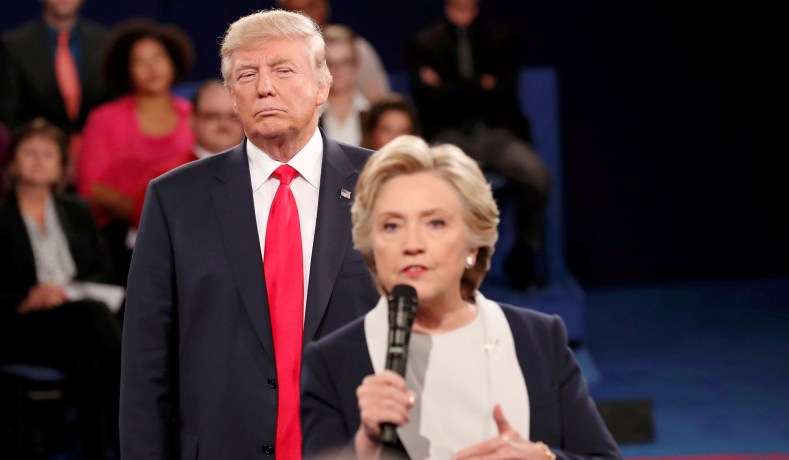
It’s been odd watching the national political conversation march forward as if the 2016 election had never happened. While the world’s changed dramatically in four years, much of 2020’s poll numbers are strikingly similar to those of 2016.
The most recent Washington Post/ABC News poll, for instance, gives Biden a 53–43 percent lead among registered voters nationally. On June 26, 2016, a Washington Post/ABC News poll — noting that Trump’s support had “plunged” — put Hillary up over the Republican 51–39 among registered voters nationwide in a head-to-head contest.
The reasons?
The survey finds broad objections to Trump’s candidacy — from his incendiary rhetoric and values to his handling of both terrorism and his own business — foreshadowing that the November election could be a referendum on Trump more than anything else.
In the first week of July 2016, Reuters/Ipsos had Clinton up 44–33 (in November of that year, the pollster gave Hillary a 90 percent chance of winning.) The latest Reuters/Ipsos poll has Biden up 48–35. The latest New York Times/Siena poll that has Biden up 14 points nationally over Trump. In the last poll conducted by Siena before the 2016 election (I don’t see any from June–July), Clinton carried a 17-point lead over Trump. In June of 2016, Fox News had Hillary with a 49–39 lead, and now it shows Biden with a 50–38 lead. In May 2016, USA Today/Suffolk poll had Hillary’s leading 50–39 percent. In June 2020, USA Today/Suffolk poll finds Biden leading 53–41 percent.
It’s difficult to conjure up a more precarious political environment for a national candidate than the one Trump finds himself in — due to both self-inflicted troubles and events out of his control — and yet the RCP average right now has Biden up over nine points. In July of 2016, a CNN/ORC poll had Trump down 52–43. In August of 2016, Quinnipiac had him down 51–41, and McClatchy/Marist had him down 48–33.
Plenty of polls, it’s true, showed a closer race, but even some of those had obvious problems. An NBC News/Wall Street Journal poll in late June 2016 had Clinton up 46–41 percent, with the Libertarian Party’s Gary Johnson and Green Party’s Jill Stein winning 16 percent of the vote combined. They ended up with around 4 percent in a contest in which both major candidates were personally unpopular.
It’s also true that national polls are about as useful as the “popular vote.” State polls, however, were hardly better — and quite similar in 2016 to 2020.
RCP average of Pennsylvania in July of 2016 found Hillary up by over a seven-point spread. Right now, Biden is up seven points. The last poll CBS News/YouGov conducted in the state had Hillary winning 48–40; the last New York Times/Siena poll, 46–39; the last Bloomberg poll 48–39; and the last NBC/Wall Street Journal/Marist poll, 49–37.
In the final Wisconsin RCP average spread, which remained consistent throughout the election, had Hillary ended up over six points. Biden is up over six points right now in the RCP average.
In Michigan, polls show Hillary at around 6.2 average in July of 2016. The number spiked in the fall — Detroit Free Press, The Detroit News, and Detroit Fox, all had Hillary with a double-digit lead in October — before the race tightened. Biden’s spread is over seven points.
None of the above is scientific, and I certainly don’t claim any special expertise on the matter. If polls tell me Donald Trump is in trouble in Pennsylvania, Michigan, and Wisconsin, I’m inclined to believe them, because the events I’m witnessing tend to confirm it. Trump hit a low in the national average today, and that’s a trend that should concern Republicans. On the other hand, lots of media and liberals seem awfully confident they’re going to run away with the election. It seems to me a little more skepticism about the polling might be in order. Especially considering recent history.


